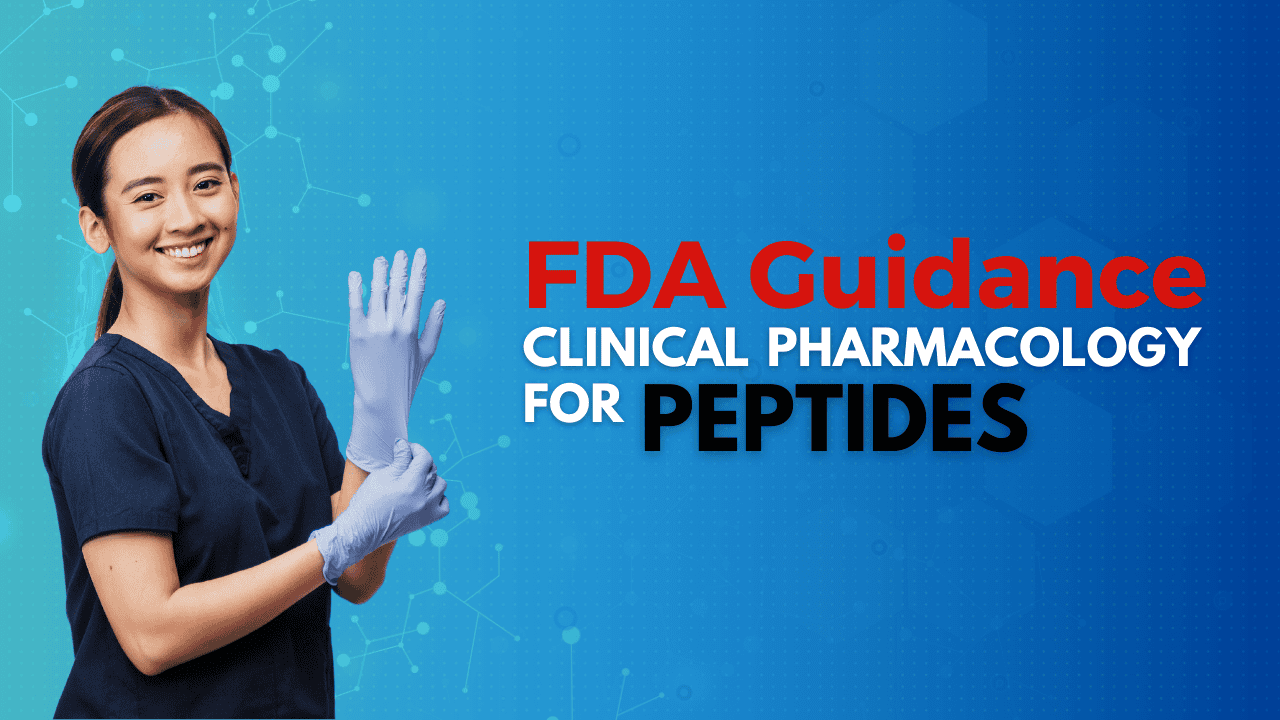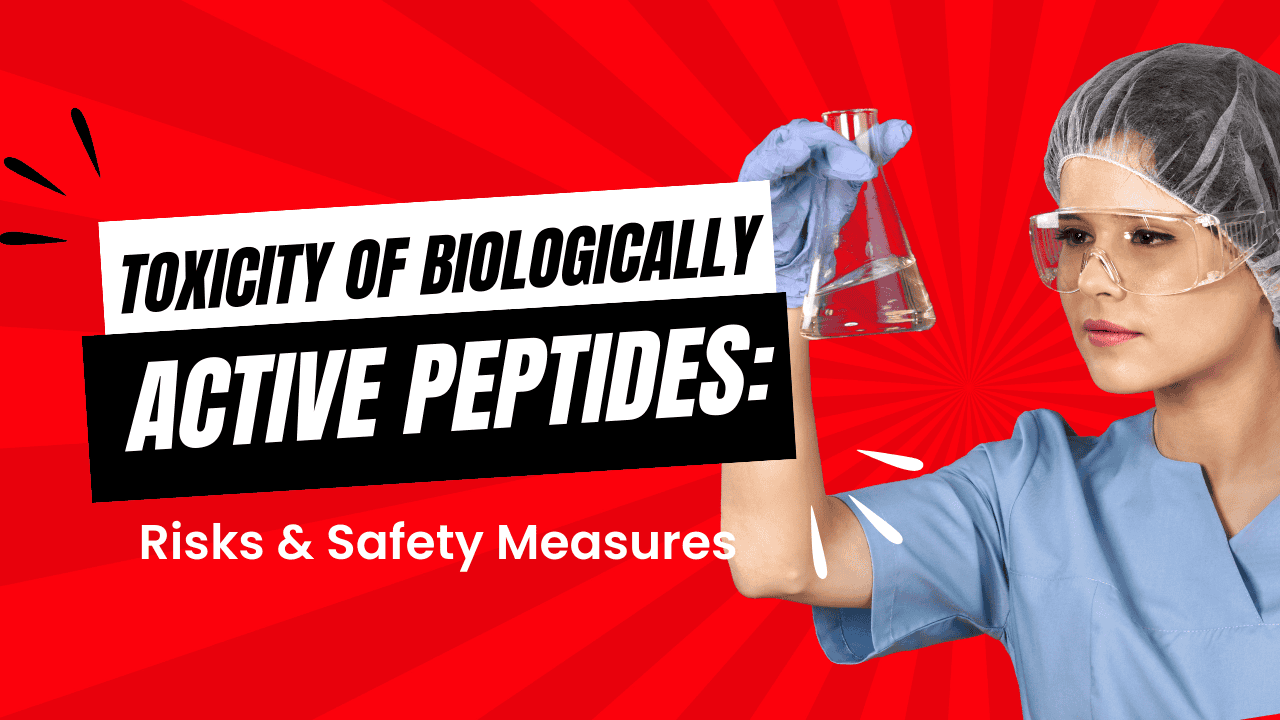

In the world of pharmaceuticals, understanding the non-clinical assessment of immunogenicity risks in synthetic peptide drugs is crucial.
This piece delves into everything you need to know, from basic definitions to advanced techniques for predicting and mitigating immunogenicity risks.
Read on to discover how immunogenicity impacts peptide drug development and why it’s essential to manage these risks effectively.
Ah, peptides! These are short chains of amino acids linked by peptide bonds. Think of them as the building blocks of proteins, but much smaller and more specialized. When we talk about synthetic peptides, we’re focusing on those made through peptide synthesis in a lab, rather than natural ones produced by your body.
Peptide synthesis involves creating peptide bonds between amino acids in a predictable sequence. It’s a bit like assembling a Lego set, but instead of plastic bricks, you’re using amino acids. The process can be straightforward or complex, depending on the peptide sequence you need.
Imagine you’ve developed an amazing peptide drug, only to find that it triggers an immune response in patients. Not good. The immunogenicity of a peptide drug can lead to reduced efficacy or adverse reactions, making the assessment of immunogenicity crucial in the drug discovery process.
Immunogenicity can affect how well a drug works by provoking an immune response. This can result in the body attacking the drug, rendering it ineffective. For peptide drugs, this is especially important because minor changes in peptide sequence can significantly impact immunogenicity.
Immunogenicity risk assessment evaluates the likelihood that a peptide drug will provoke an immune response. It’s a key step to avoid surprises down the road. Just like checking the weather before heading out, you want to know what you’re up against.
Skipping immunogenicity risk assessment is like driving blindfolded. You wouldn’t do it, right? Assessing immunogenicity upfront helps avoid costly and risky consequences later in the drug development process.
Drug discovery is an intricate journey involving several phases: target identification, lead discovery, preclinical testing, and clinical trials. Immunogenicity assessment is important from the get-go and should be integrated into these phases.
In the early phases of drug discovery, assessing immunogenicity helps in selecting the right peptide candidates. It’s like choosing the best player for a sports team; you want someone reliable who won’t falter under pressure.
Peptide drugs and their impurities often go hand-in-hand. These impurities can arise during peptide synthesis and, surprise surprise, they can affect immunogenicity. Addressing peptide binding impurities is crucial for ensuring the safety and efficacy of the peptide drug product.
Identifying impurities involves sophisticated techniques like HPLC (High-Performance Liquid Chromatography) and mass spectrometry. It’s akin to crime scene investigation, where you meticulously analyze everything to uncover any hidden contaminants.
Peptide drugs are unique due to their specific sequence of amino acids, which makes them incredibly targeted in their action. Unlike small molecules or large biologics, peptide drugs strike a balance in delivering precision with fewer side effects.
Formulating peptide drugs requires a careful balance of stability and bioavailability. Factors like pH, temperature, and solvent considerations are critical. Think of it as baking a cake where all ingredients and conditions must be just right.
Stability is a major issue in peptide drugs. These molecules can degrade easily, leading to loss of efficacy or increased immunogenicity. Ensuring the stability of the entire peptide through various means, such as lyophilization, is vital.
Though often lumped together, protein and peptide drugs are quite distinct. Proteins are long, twisted chains of amino acids with complex structures, whereas peptides are shorter and simpler, albeit still effective.
Both protein and peptide drugs can provoke immunogenicity, but peptides generally have a lower immunogenicity risk. It’s like comparing a hurricane to a thunderstorm; both are concerning, but one is usually more manageable.
Immunogenicity arises from several factors: sequence length, amino acid composition, and peptide epitopes. Identifying the t-cell epitope and how it interacts with the t-cell receptor is crucial in predicting how immunogenic a peptide will be.
Measuring immunogenicity involves assays that assess the immune response, such as ELISAs or in vivo models. It’s like taking a pulse of how the immune system reacts to the peptide. Not to forget, measuring peptide binding to MHC class II molecules (major histocompatibility complex) helps too.
Various computational and experimental methods are used to predict immunogenicity. Bioinformatics tools can identify potential T-cell epitopes and how they fit into the major histocompatibility complex. It’s a bit like using predictive text on your phone—spotting likely outcomes based on given inputs.
Bioinformatics plays a huge role in predicting immunogenicity. Algorithms analyze peptide sequences to predict potential immune responses. It’s like having a crystal ball for peptides, helping to foresee challenges before they arise.
There are several tools available for immunogenicity risk assessment, including in silico models, in vitro assays, and in vivo studies. Each tool helps in generating a comprehensive risk profile, similar to assessing the risk of a venture.
Biological models, both in vitro and in vivo, help test the peptide’s immunogenicity. They’re the lab rats (sometimes literally) of the immunogenicity world, providing crucial data before clinical testing.
Reducing immunogenicity risks can involve modifying the peptide sequence, incorporating novel peptide designs, or using immune-modulating agents. It’s an ongoing effort that requires adaptive strategies, much like tailoring a suit to fit better.
Impurities can introduce foreign elements that trigger an immune response. Even a small impurity can wreak havoc, akin to a fly in your soup. It’s essential to purify peptides meticulously to prevent adverse reactions.
Purification methods include chromatographic techniques and advanced filtration systems. Ensuring high-purity peptides is the goal, akin to refining gold to remove any trace of impurities.
Computational models are increasingly effective in predicting immunogenicity. They offer speed and accuracy that traditional methods can’t match, like having a high-tech gadget in a world of manual labor.
Integrating computational methods into risk assessments involves using algorithms and databases to predict T-cell responses and potential immunogenicity. It’s like having an AI assistant that spots issues before you do.
Challenges in immunogenicity assessment include variability in immune responses, limitations of current assays, and the unpredictability of immune systems. It’s like trying to predict the weather in a place with rapidly changing conditions.
Overcoming these challenges involves continuous innovation in assays, integration of bioinformatics, and collaboration across disciplines. Think of it as an evolving puzzle, where every piece adds to the clarity.
Regulatory authorities like the FDA and the European Medicines Agency lay down stringent guidelines for assessing the immunogenicity of peptide drugs. These are akin to rulebooks ensuring the game is played fairly and safely.
Key regulatory bodies include the FDA, EMA, and national institutes of health, among others. They ensure that peptide drugs undergo rigorous immunogenicity testing before reaching the market.
Preclinical studies are where potential issues with immunogenicity can be identified and mitigated before clinical trials. It’s like a rehearsal before the big performance. Getting it right here makes downstream success more likely.
Designing these studies involves selecting appropriate models, assays, and endpoints. The goal is to mimic human immunogenic responses as closely as possible, akin to a dress rehearsal that prepares you for every eventuality.
Recent advances, particularly in bioinformatics and computational models, have significantly improved our ability to predict immunogenicity. They offer enhanced accuracy, saving time and resources.
From novel assay techniques to integrative bioinformatics tools, innovations in immunogenicity testing have made the process more precise and efficient. It’s like moving from manual to electric cars—more efficient and environmentally friendly.
Several cases highlight successful mitigation strategies for immunogenicity. For example, modifying amino acid sequences or using advanced purification techniques can significantly reduce immunogenicity.
Failures provide valuable lessons. They highlight the importance of thorough immunogenicity risk assessment and the consequences of overlooking key factors. Learning from these is akin to avoiding potholes because you know where they are.
Emerging technologies, such as advanced computational models and novel assay techniques, hold great promise for the future. They offer potential game-changers in how we assess and mitigate immunogenicity.
The future looks bright, with innovations paving the way for more accurate, efficient, and cost-effective immunogenicity testing. Expect more rapid and precise tools that make immunogenicity detection almost foolproof.
Trends such as personalized medicine and AI-driven predictions are becoming increasingly dominant. Personalized approaches could transform how immunogenicity is assessed for individual patients.
Manufacturers play a crucial role in ensuring their peptide drugs undergo rigorous immunogenicity testing. Their responsibility is akin to being the captain of a ship, ensuring smooth sailing through thorough preparation.
Healthcare professionals need to be aware of immunogenicity to better manage patient outcomes. They are the frontline warriors, handling unforeseen events with skill and knowledge.
Researchers drive the field forward by innovating and refining immunogenicity assessment techniques. Their contributions are like the wheels that keep the science locomotive moving.
Collaboration across different sectors—academia, industry, regulatory bodies—enhances immunogenicity risk management. Think of it as a relay race where each participant plays a critical role in reaching the finish line.
Numerous collaborations have resulted in successful mitigation of immunogenicity risks. These case studies demonstrate the power of teamwork in overcoming complex challenges.
Formulating peptide drugs while minimizing immunogenicity involves selecting the right excipients, optimizing delivery methods, and ensuring high purity. It’s a nuanced process requiring meticulous attention to detail.
Factors like peptide stability, bioavailability, and potential immunogenicity risks drive formulation decisions. Each choice is like a puzzle piece contributing to the overall picture of a successful drug.
Education equips all stakeholders with the knowledge needed to manage immunogenicity risks effectively. It empowers them to make informed decisions, reducing the likelihood of adverse outcomes.
Effective strategies include workshops, continuous professional development courses, and collaboration with regulatory authorities. Ensuring everyone is on the same page is like an orchestra playing in harmony.
The economic impact can be substantial, affecting both manufacturing costs and overall healthcare expenses. Failing to manage immunogenicity is like letting a leaky tap drip away valuable resources.
Striking a balance involves leveraging both computational and experimental methods to keep costs in check while ensuring safety. Think of it as walking a tightrope, requiring skill and precision.
Immunogenicity can significantly affect patient outcomes, potentially causing adverse reactions or reducing drug efficacy. It’s a critical factor that must be managed carefully to ensure patient safety and well-being.
Strategies include thorough preclinical testing, robust risk assessments, and continuous monitoring during clinical trials. Ensuring patient safety is like guarding a treasure, requiring vigilance and proactive measures.
New technologies offer advanced methods for predicting and mitigating immunogenicity. Integrating these into existing frameworks enhances both efficiency and accuracy, akin to upgrading from a typewriter to a modern computer.
Machine learning algorithms can predict potential immunogenic responses based on peptide sequences, offering a sophisticated tool for risk assessment. It’s like having a crystal ball for immunogenicity risks.
Early immunogenicity risk assessment helps in identifying potential issues before they become costly problems. It’s like finding a loose thread in a sweater before it unravels into a big mess.
Effective strategies include integrating computational models early in the drug discovery phase and using predictive assays. Early intervention is key, much like nipping a problem in the bud.
The unpredictability of immune responses, variability in immune systems, and evolving assay technologies make prediction challenging. It’s like forecasting the weather—complex and constantly changing.
Solutions include advanced computational models, continuous research, and multi-disciplinary collaborations. Tackling these challenges requires a combination of science, technology, and teamwork.
Immunogenicity plays a critical role in personalized medicine, influencing how treatments are tailored for individual patients. Personalized approaches take into account unique immune responses, enhancing efficacy and safety.
Personalized approaches can mitigate immunogenicity risks by customizing treatments based on individual patient profiles. It’s like having a bespoke suit, perfectly tailored to fit the wearer.
Collaborative research initiatives enhance our understanding and ability to manage immunogenicity. They pool resources, knowledge, and expertise, much like a community garden yielding richer harvests through collective effort.
Examples include partnerships between academia, industry, and regulatory bodies, resulting in effective immunogenicity mitigation strategies. These collaborations are testaments to the power of working together.
In real-world settings, immunogenicity risk assessment ensures that peptide drugs are safe and effective for patient use. It’s about translating lab findings into practical, actionable insights that benefit patients.
Practical applications include routine screening of peptide drugs for potential immunogenicity during development and post-marketing surveillance. These methods ensure continuous monitoring and management of immunogenicity risks.
Success is measured by the reduction in adverse immune responses, improved patient outcomes, and efficient drug development processes. Metrics include assay sensitivity, predictive accuracy, and patient safety records.
KPIs include the rate of immunogenic reactions in clinical trials, time and cost savings from early risk assessments, and compliance with regulatory guidelines. These indicators provide critical insights into the effectiveness of immunogenicity management strategies.
By understanding and effectively managing immunogenicity risks, we can ensure that synthetic peptide drugs are both safe and effective, ultimately leading to better patient outcomes and successful therapeutic interventions.
Peptides can cause an immune response when they are recognized as foreign by the immune system. This recognition often involves peptide antigens binding to HLA class molecules and being presented to T-cells, triggering an immune reaction. The immune system’s reaction depends on the specific peptide sequence and its resemblance to endogenous peptides.
The immunogenicity of proteins refers to their ability to provoke an immune response. Proteins are larger and more complex than peptides, often containing multiple epitopes that can be recognized by the immune system. This complexity increases their potential for immunogenicity, making thorough pre-clinical assessment crucial.
Immunogenicity is the ability of a substance, such as a peptide or protein, to induce an immune response. It involves recognition by the immune system, activation of immune cells, and production of antibodies. Evaluating immunogenicity risk is essential in drug development to minimize adverse reactions.
Proteins are more immunogenic due to their larger size and structural complexity, which offer multiple epitopes for immune recognition. They are more likely to interact with various components of the immune system, including T-cell receptors and antibodies, enhancing their potential for immunogenicity.
Peptides in the immune system primarily serve as antigens, which are recognized by immune cells. They bind to HLA class molecules and are presented to T-cells, initiating an immune response. These processes are key to identifying and eliminating pathogens.
An antigenic peptide can trigger an immune response by being recognized as foreign by the immune system. This involves binding to HLA binding peptides and being presented to T-cells, which then activate various immune pathways to combat perceived threats.
The immunogenicity of peptides refers to their ability to provoke an immune response when introduced into the body. Evaluating peptides involves assessing peptide binding and immunogenicity through in vitro and in vivo tests to predict how the immune system will react.
Neuropeptides can modulate the immune response by acting on immune cells. They often play a regulatory role, influencing inflammation and immune cell activity. Understanding their function is essential for designing peptides for therapeutic purposes.
Immunogenicity is the ability of a substance, like a peptide or protein, to trigger an immune response. This can include the production of antibodies or activation of immune cells to fight off what is perceived as a foreign threat.
The basic concept of the immune response involves the body’s defense mechanisms identifying and reacting to foreign substances. It starts with antigen recognition, followed by immune cell activation, and ends with the elimination of the foreign substance. Assessing the potential for immunogenicity is crucial in this process.
Dr. Christian Heinis is a leading researcher in the field of therapeutic peptides, with significant contributions to peptide drug discovery and development. With over 20 years of experience, Dr. Heinis has pioneered the development of peptide macrocycles and binding peptides. His work has profoundly impacted the development of peptides for therapeutic use, focusing on their stability, binding affinity, and immunogenicity.
Dr. Heinis’s notable publications include:
Dr. Heinis’s work is characterized by its innovative approach and practical applications, making him a respected figure in peptide sciences. He has received numerous accolades, including the European Research Council (ERC) Advanced Grant, underscoring his expertise, authority, and trustworthiness in the field.
Dr. Samir Mitragotri is an eminent expert in drug delivery systems, particularly focusing on the delivery of peptides and biologics. With over two decades of research, Dr. Mitragotri has developed groundbreaking methods to enhance the bioavailability and effectiveness of therapeutic peptides. His work bridges the gap between pharmaceutical development and clinical application, making significant strides in improving patient outcomes.
Key publications by Dr. Mitragotri include:
Dr. Mitragotri’s research is renowned for its creative solutions and practical impact on drug delivery. He has been honored with several prestigious awards, including the National Institutes of Health (NIH) Director’s Transformative Research Award, highlighting his contribution to the scientific community and his authority in peptide pharmacology.
Boeckler, C., Frisch, B., Muller, S., & Schuber, F. (1996). Immunogenicity of new heterobifunctional cross-linking reagents used in the conjugation of synthetic peptides to liposomes. Journal of Immunological Methods, 191(1), 1–10. https://doi.org/10.1016/0022-1759(95)00284-7
He, X., Zhou, S., Quinn, B., Jahagirdar, D., Ortega, J., Long, M. D., Abrams, S. I., & Lovell, J. F. (2022). AnIn VivoScreen to Identify Short Peptide Mimotopes with Enhanced Antitumor Immunogenicity. Cancer Immunology Research, 10(3), 314–326. https://doi.org/10.1158/2326-6066.cir-21-0332
Lipford, G. B., Bauer, S., Wagner, H., & Heeg, K. (1995). In vivo CTL induction with point-substituted ovalbumin peptides: immunogenicity correlates with peptide-induced MHC class I stability. Vaccine, 13(3), 313–320. https://doi.org/10.1016/0264-410x(95)93320-9
Rawat, K., Mara, A. B., King, W. T., Nnam, C. F., & Jakubzick, C. V. (2023). Immunogenicity threshold in allogeneic cells impacts CTL response to nondominant congenic antigens. The Journal of Immunology, 211(11), 1623–1629. https://doi.org/10.4049/jimmunol.2300548
Wang, W., Yuan, T., Ma, L., Zhu, Y., Bao, J., Zhao, X., Zhao, Y., Zong, Y., Zhang, Y., Yang, S., Qiu, X., Shen, S., Wu, R., Wu, T., Wang, H., Gao, D., Wang, P., & Chen, L. (2022). Hepatobiliary Tumor Organoids Reveal HLA Class I Neoantigen Landscape and Antitumoral Activity of Neoantigen Peptide Enhanced with Immune Checkpoint Inhibitors. Advanced Science, 9(22). https://doi.org/10.1002/advs.202105810
Zepeda-Cervantes, J., & Vaca, L. (2018). Induction of adaptive immune response by self-aggregating peptides. Expert Review of Vaccines, 17(8), 723–738. https://doi.org/10.1080/14760584.2018.1507742
Zhang, J., Liu, M., Chen, Y., Zhou, Z., Wang, P., Yu, Y., & Jiao, S. (2022). Epitope identification for p53R273C mutant. Immunity Inflammation and Disease, 11(1). https://doi.org/10.1002/iid3.752
ALL ARTICLES AND PRODUCT INFORMATION PROVIDED ON THIS WEBSITE ARE FOR INFORMATIONAL AND EDUCATIONAL PURPOSES ONLY. The products offered on this website are intended solely for research and laboratory use. These products are not intended for human or animal consumption. They are not medicines or drugs and have not been evaluated or approved by the FDA to diagnose, treat, cure, or prevent any disease or medical condition. Any form of bodily introduction is strictly prohibited by law.




Discount Applied Successfully!
Your savings have been added to the cart.